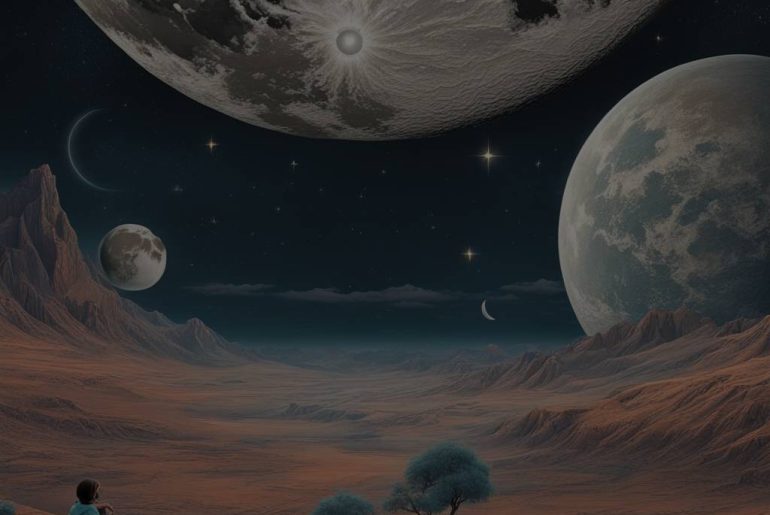Each night as the sun sets and darkness settles upon the earth, a mystical realm awakens. It is a world where reality bends and imaginations run wild – the realm of dreams. Humans have long been captivated by these enigmatic nightly adventures, seeking to unravel their secrets and understand their profound significance. Amidst these dreams lies an intriguing connection between the moon and our subconscious minds, entwined in a dance that has fascinated and perplexed us for centuries.
The Moon’s Mysterious Influence
Throughout history, the moon has held a significant place in human culture and mythology. Often associated with feminine energy and the divine, the moon has been a symbol of intuition, emotions, and spiritual illumination. It has been revered by ancient civilizations and continues to inspire awe and wonder in the modern world.
But beyond its symbolic importance, the moon’s influence extends to the realm of dreams. Many believe that the phases of the moon can affect the content and intensity of our dreams. It is believed that during a full moon, dreams become more vivid and powerful, while during a new moon, dreams may be more subtle and introspective.
Scientific studies have explored the potential link between the moon and dreaming. While the evidence is not conclusive, some researchers suggest that the moon’s gravitational pull could impact our sleep cycles and, consequently, our dream patterns. Others propose that the moon’s electromagnetic influence may play a role in influencing dream content.
The Enigmatic Language of Dreams
Dreams have long been viewed as a gateway to the subconscious, offering insights into our innermost thoughts, fears, and desires. They can be a source of inspiration, premonition, and self-discovery. Yet, understanding and interpreting dreams remains a complex endeavor.
Carl Jung, the renowned Swiss psychiatrist and psychoanalyst, believed that dreams held profound symbolic meaning and could offer a glimpse into the collective unconscious. He saw dreams as a language through which the unconscious communicates with the conscious mind, urging individuals to explore and integrate repressed or overlooked aspects of their psyche.
Some psychologists argue that dreams serve as a mechanism for processing emotions, memories, and experiences from our waking lives. They suggest that dreams provide a safe space for our minds to work through unresolved issues, release emotions, and consolidate new knowledge.
Exploring the Moonlit Landscapes of Dreams
Every night, as the moon graces the night sky, we embark on journeys within the recesses of our own minds. Dreams can take us to fantastical landscapes and improbable scenarios, where time and logic hold no sway. They possess the ability to transport us to forgotten memories, evoke intense emotions, and introduce us to parts of ourselves we may have long neglected.
Exploring the world of dreams can be a deeply personal and transformative experience. Keeping a dream journal can be a valuable tool for those seeking to unravel their dreamscapes. Recording dreams immediately upon waking allows us to capture their nuances and details, preserving them for further contemplation.
As we delve into this enigmatic realm, we begin to unlock the multifaceted imagery and messages that dreams offer. They can provide fresh perspectives, reveal hidden truths, and inspire creativity. Through their often ambiguous nature, dreams invite us to engage in an ongoing dialogue between our conscious and unconscious selves.
When the Moon Meets Earth
The intertwined relationship between dreams and the moon continues to mesmerize and beguile us. Whether rooted in ancient mythology, scientific curiosity, or personal introspection, the moon’s presence in our dreamscapes adds an element of magic and mystique.
So, the next time you find yourself gazing up at the moonlit sky, remember that within the realms of your own dreams, a multitude of mysteries await. Allow yourself to be transported, to explore, and to embrace the wonders that unfold when the moon meets Earth.

